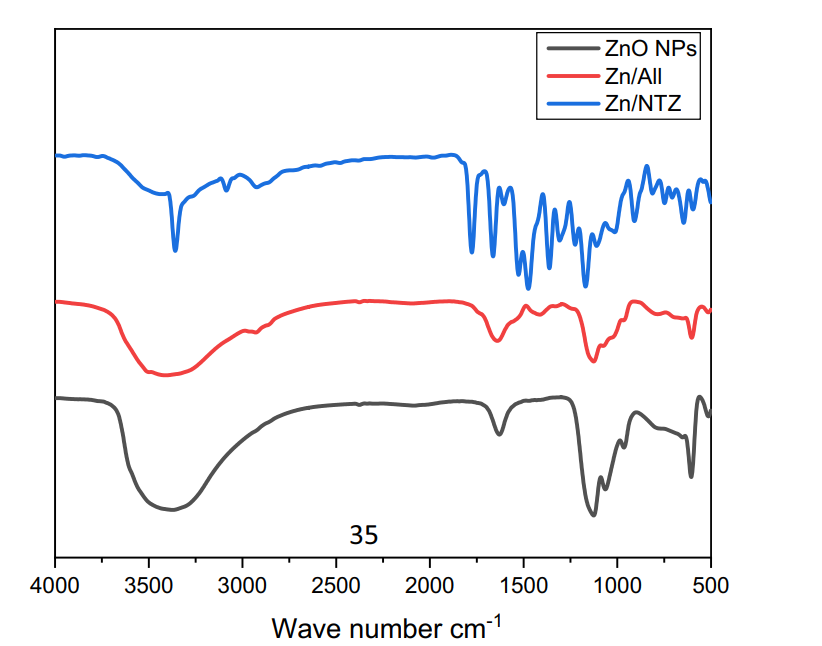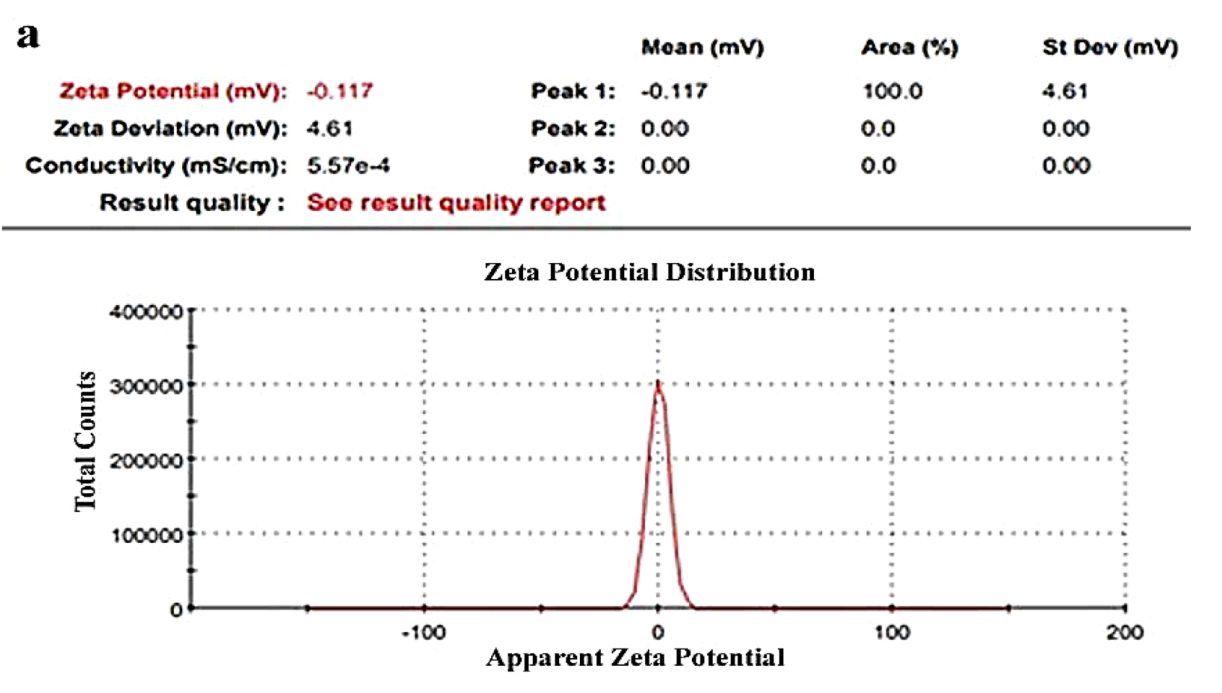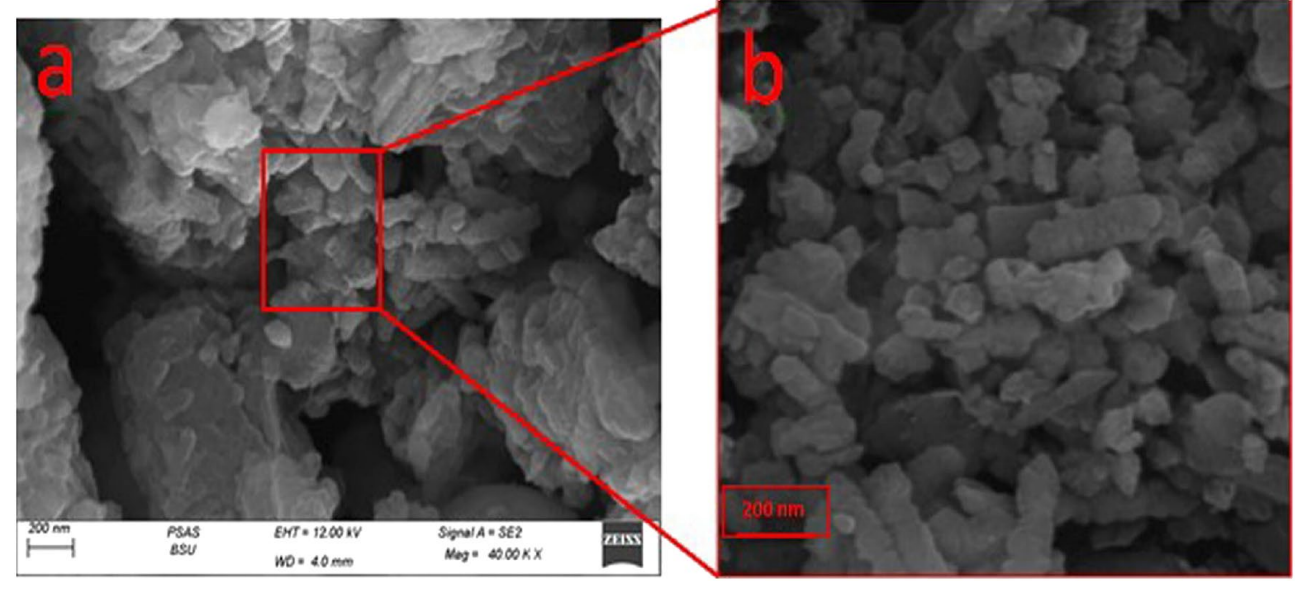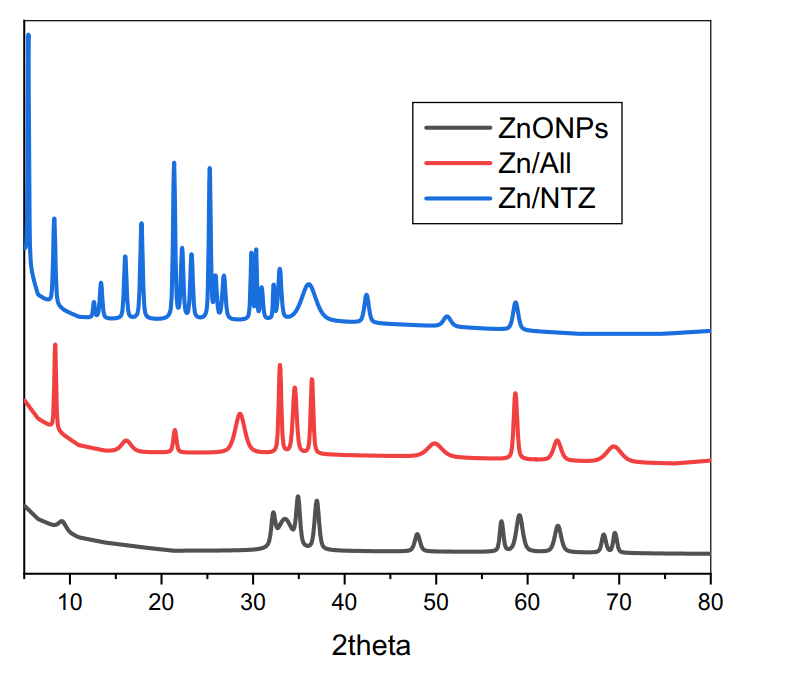Editor: Nina
Scientists fabricate zinc oxide nanoparticles loaded with nitazoxanide and Allium sativum to enhance therapeutic delivery and efficacy in treating cryptosporidiosis in immunocompromised mice.
Key Preview
- Research Question: The study investigates the efficacy of newly fabricated zinc oxide nanoparticles (ZnO-NPs), nitazoxanide (NTZ)-loaded ZnO-NPs, and Allium sativum (garlic)-loaded ZnO-NPs for treating cryptosporidiosis, a parasitic infection that significantly impacts immunocompromised individuals.
- Research Design and Strategy: The research employed an experimental design using immunosuppressed Swiss albino mice infected with Cryptosporidium parvum. The design assessed both the therapeutic efficacy and the safety of various nanoparticle formulations compared to traditional treatments.
- Method: Thirty immunosuppressed mice were divided into six groups, with specific treatments administered. Efficacy was evaluated through parasitological, histopathological, and oxidative stress marker analysis.
- Key Results: The study found that NTZ treatment led to an 81.5% reduction in oocyst shedding. A. sativum-loaded ZnO-NPs achieved a 71.1% reduction. Both treatments significantly improved histopathological conditions in the intestines, liver, and lungs of treated mice.
- Significance of the Research: This study highlights the potential of ZnO-NPs as a novel therapeutic strategy against cryptosporidiosis, especially when combined with known antiparasitic and natural agents, offering an economical and environmentally friendly alternative for treatment.
Introduction
Cryptosporidiosis is a significant parasitic infection primarily caused by the protozoan parasite Cryptosporidium spp., which poses serious health risks, especially to immunocompromised individuals. This disease is mainly transmitted via the fecal-oral route, leading to severe gastrointestinal symptoms such as diarrhea, abdominal pain, and dehydration. While it can be self-limiting in healthy individuals, cryptosporidiosis can result in life-threatening complications among those with weakened immune systems, including patients with HIV/AIDS, organ transplant recipients, and malnourished children.
Traditional treatment for cryptosporidiosis largely relies on the antiparasitic drug nitazoxanide (NTZ), which has been approved by the FDA. This drug functions by inhibiting the anaerobic metabolism of the parasite, thus reducing oocyst shedding and alleviating diarrhea. However, NTZ’s efficacy is often limited, particularly in severely immunocompromised patients, where it may not provide sufficient therapeutic benefits. Moreover, the conventional delivery methods of NTZ often lead to suboptimal drug concentrations at the site of infection, limiting the overall effectiveness of the treatment.
The challenges associated with the current treatment approaches stem from inadequate drug bioavailability and the rapid clearance of NTZ from the body, which results in insufficient therapeutic levels to combat the infection effectively. Additionally, the reliance on systemic administration can lead to increased side effects and complications, further complicating treatment regimens for vulnerable populations. These factors contribute to ongoing morbidity and mortality associated with cryptosporidiosis, underscoring the urgent need for more effective therapeutic strategies.
To address these challenges, innovative drug delivery strategies utilizing nanotechnology have emerged as a promising solution. Specifically, the development of zinc oxide nanoparticles (ZnO-NPs) as drug carriers represents a novel approach to enhance the delivery and efficacy of existing antiparasitic medications. This strategy not only aims to improve bioavailability and target delivery to the site of infection but also seeks to harness the inherent properties of ZnO-NPs to boost the therapeutic effects of known treatments when combined with natural agents like Allium sativum (garlic). By optimizing drug delivery systems, this research endeavors to provide a cost-effective, environmentally friendly, and more effective therapeutic alternative to combat cryptosporidiosis, especially in immunocompromised patients.
Research Team and Aim
The research team for this study was led by Doaa A. Hamdy, alongside co-researchers Mousa A. M. Ismail, Hala M. El-Askary, Heba Abdel-Tawab, Marwa M. Ahmed, Fatma M. Fouad, and Fatma Mohamed. This collaborative effort took place at Beni-Suef University, Egypt, and was conducted over a period leading up to October 2023. The findings of this research were published in the journal Scientific Reports under the title “Newly fabricated zinc oxide nanoparticles loaded materials for therapeutic nano delivery in experimental cryptosporidiosis.”
The primary aim of the research, as articulated by lead researcher Doaa A. Hamdy, was to “fabricate and investigate the efficiency of zinc oxide nanoparticles (ZnO-NPs), nitazoxanide (NTZ)-loaded ZnO-NPs, and Allium sativum (garlic)-loaded ZnO-NPs in treating cryptosporidiosis.” This aim underscores the focus on developing innovative therapeutic strategies to enhance treatment efficacy against this challenging parasitic infection, particularly for immunocompromised individuals.
Experimental Process
Primary Technique: Fabrication and Characterization of Zinc Oxide Nanoparticles (ZnO-NPs)
The main method employed in this study was the synthesis of ZnO-NPs using a co-precipitation technique. This method was chosen for its simplicity, cost-effectiveness, and ability to produce nanoparticles with desirable properties for therapeutic applications.
Experiment 1: Synthesis of ZnO-NPs
- Key Steps:
- A solution of zinc sulfate (0.1 M) and sodium hydroxide (0.2 M) was prepared using deionized water.
- The two solutions were mixed in a beaker and stirred continuously at 60°C for 4 hours at a speed of 1000 rpm.
- After the formation of a milky white precipitate, the solution was centrifuged at 4500 rpm for 2 minutes to collect the nanoparticles.
- The resulting ZnO-NPs were washed with deionized water followed by methanol and then dried at 350°C for 3 hours.
- Data Collection and Analysis:
The synthesis was confirmed through characterization techniques such as Fourier Transform Infrared Spectroscopy (FTIR), Scanning Electron Microscopy (SEM), and X-Ray Diffraction (XRD). The particle size and zeta potential were measured using dynamic light scattering (DLS).
Figure 1. FTIR of ZnO-NPs, (Zn/All) and (Zn/NTZ). Te functional groups present in samples were evaluated by FTIR analysis. Te FTIR spectra were recorded within the range of 400–4000 c m−1 .

Figure 2. ZnO-NPs zeta potential

Figure 3. SEM of ZnO-NPs illustrating the surface morphology of sample.

Figure 4. XRD Pattern of ZnO-NPs, (Zn/ All) and (Zn/NTZ) from 10 to 80 theta to show the crystallinity of samples.
- Results:
The synthesized ZnO-NPs exhibited a crystalline structure with sizes averaging between 50 to 65 nm, as confirmed by SEM imaging. Zeta potential measurements indicated a negative surface charge, which is essential for stability in biological applications. - Novel Aspect:
This study utilized a straightforward and environmentally friendly approach to synthesize ZnO-NPs. The incorporation of a low-cost method enhances accessibility for further research and potential therapeutic applications compared to traditional nanoparticle synthesis techniques.
Experiment 2: Loading of Nitazoxanide (NTZ) into ZnO-NPs
- Key Steps:
- A solution of 2 g of NTZ was prepared in an aqueous medium.
- 0.05 g of ZnO-NPs was added to the NTZ solution and sonicated for 1 hour to promote uniform dispersion.
- The mixture was stirred overnight at room temperature and filtered to obtain the NTZ-loaded ZnO-NPs.
- Data Collection and Analysis:
The loading efficiency was determined by measuring the amount of NTZ remaining in the supernatant via spectrophotometry. FTIR analysis was performed to confirm the successful loading of NTZ onto ZnO-NPs. - Results:
The loading efficiency of NTZ onto ZnO-NPs was found to be 85%, as indicated by spectrophotometric analysis. FTIR spectra showed distinct peaks corresponding to NTZ, confirming its presence in the nanocarrier. - Novel Aspect:
This method provides a significant improvement in drug delivery systems by enhancing the bioavailability of NTZ through nanoparticle encapsulation, potentially leading to better therapeutic outcomes in cryptosporidiosis treatment.
Experiment 3: Loading of Allium sativum (Garlic) Extract into ZnO-NPs
- Key Steps:
- 2 g of powdered garlic was mixed with 100 mL of trisodium citrate solution (5.4 mM) and stirred for 1 hour.
- ZnO-NPs were added to the garlic solution under sonication and stirred overnight.
- The mixture was filtered and washed with distilled water and methanol to obtain A. sativum-loaded ZnO-NPs.
- Data Collection and Analysis:
The loading efficiency was assessed similarly to the NTZ-loaded ZnO-NPs by measuring the concentration of garlic constituents in the supernatant using high-performance liquid chromatography (HPLC). - Results:
A loading efficiency of 78% for garlic extract was achieved. FTIR analysis revealed the presence of garlic’s bioactive compounds, indicating successful encapsulation. - Novel Aspect:
This study highlights the synergistic potential of combining natural extracts with ZnO-NPs, which may enhance the therapeutic efficacy of garlic as an antiparasitic agent, a significant advancement over conventional garlic extract applications.
Experiment 4: In Vivo Efficacy Study in Immunosuppressed Mice
- Key Steps:
- Thirty immunosuppressed Swiss albino mice were infected with 10^4 Cryptosporidium oocysts via oral intubation.
- The mice were divided into six groups, with each receiving different treatments including NTZ, ZnO-NPs, NTZ-loaded ZnO-NPs, and A. sativum-loaded ZnO-NPs for 5 days post-infection.
- Fecal samples were collected on the 21st day post-infection to quantify oocyst shedding.
- Data Collection and Analysis:
Oocyst counts were determined using the modified Ziehl–Neelsen staining method, and the percentage reduction in oocyst shedding was calculated using one-way ANOVA for statistical significance. - Results:
NTZ treatment resulted in an 81.5% reduction in oocyst shedding, while A. sativum-loaded ZnO-NPs showed a reduction of 71.1%. Histopathological analysis confirmed significant improvements in intestinal, hepatic, and pulmonary conditions in treated groups. - Novel Aspect:
The study demonstrates the potential of ZnO-NPs as effective drug delivery systems in treating cryptosporidiosis, offering a novel and environmentally friendly alternative to existing treatments, particularly for immunocompromised patients.
Conclusion
The successful development of the zinc oxide nanoparticles (ZnO-NPs) drug delivery system is achieved through a systematic approach that combines innovative synthesis methods, effective loading of therapeutic agents, and rigorous in vivo testing. By employing a co-precipitation technique, the research team was able to fabricate ZnO-NPs that exhibit desirable properties for therapeutic applications. The subsequent loading of nitazoxanide (NTZ) and Allium sativum (garlic) extracts into these nanoparticles enhanced their bioavailability and targeted delivery to the site of infection, which is crucial for combating cryptosporidiosis effectively.
This study highlights the potential of ZnO-NPs as a novel and effective therapeutic strategy against cryptosporidiosis, especially when combined with established antiparasitic medications and natural agents. The findings demonstrated significant reductions in oocyst shedding and improvements in histopathological conditions in treated immunocompromised mice. Furthermore, the research provides a cost-effective and environmentally friendly approach to drug delivery, emphasizing the advantages of using nanoparticle-based systems in enhancing treatment outcomes for vulnerable populations. Overall, this work represents a promising advancement in the field of nanomedicine, offering new avenues for the treatment of parasitic infections.
Reference
Hamdy, Doaa A., et al. “Newly Fabricated Zinc Oxide Nanoparticles Loaded Materials for Therapeutic Nano Delivery in Experimental Cryptosporidiosis.” Scientific Reports, vol. 13, no. 19650, 2023, doi:10.1038/s41598-023-46260-3.
